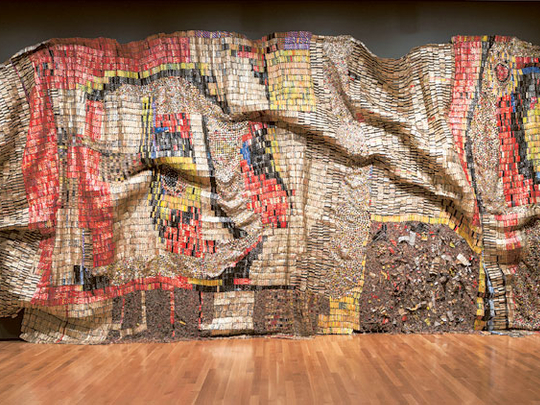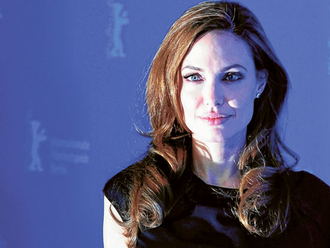
Abu Dhabi: The Guggenheim Abu Dhabi has revealed the 17 artworks which will become part of its permanent collection at its grand opening in 2017.
These include paintings by contemporary artists Al Anatsui, Monir Farmanfarmaian, Adel Al Siwi and James Rosenquist.
Fifty years after having started his career as a billboard painter, Rosenquist spoke to members of the Abu Dhabi art community about his artwork which will be displayed at the Guggenheim Abu Dhabi Museum.
Today, Rosenquist is known internationally as one of the pioneers in what has been recognised as ‘pop art’.
As part of the Guggenheim Talking Art series which was launched in 2009, artists who will be a part of the international museum’s art collection, spoke to the public about their work and experiences within the field.
“The one thing that made me stand out in my youth was my ability to make something that is different from what other artists were presenting and learning at art school. I advise all aspiring painters or creators of art in any form, to do the same; to develop something that is born out of their personal feelings and that does not look like anyone else’s work,” Rosenquist said.
“The biggest mistake I feel that the younger generation is making is that they hurriedly finish up their work and rush to an art gallery to display it without actually developing or perfecting their works as much as they could. In those cases, critics often do not hesitate to be harshly opinionated, making artists lose some confidence in themselves,” he added.
“It was in 2009 that the foundations of the Guggenheim Abu Dhabi art collection were laid. What started out as a assortment of strategic documents grew into a large archive of art works,” said Valerie Hillings, associate curator and manager, Guggenheim curator since 2004.
“The idea behind the museum is to reflect a plurality of vision and a diversity of approaches. These will be seen in sculptures, works on paper, photography, installations, film, video, performance and also media which we may not yet know or imagine,” Hillings added.












